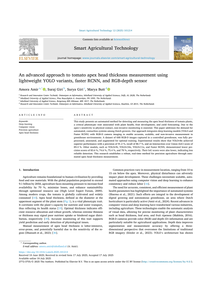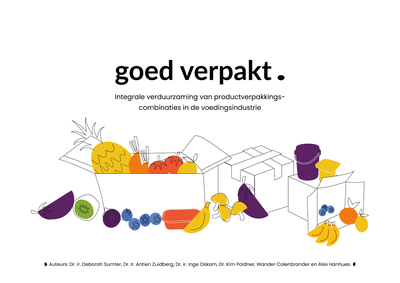Control of plant growth is an important aspect of crop productivity and yield in agriculture. Overexpression of the At CHR12/ 23 genes in Arabidopsis thaliana reduced growth habit without other morphological changes. These two genes encode Snf2 chromatin remodelling ATPases. Here, we translate this approach to the horticultural crop tomato ( Solanum lycopersicum). We identified and cloned the single tomato ortholog of the two Arabidopsis Snf2 genes, designated Sl CHR1. Transgenic tomato plants (cv. Micro-Tom) that constitutively overexpress the coding sequence of Sl CHR1 show reduced growth in all developmental stages of tomato. This confirms that Sl CHR1 combines the functions of both Arabidopsis genes in tomato. Compared to the wild type, the transgenic seedlings of tomato have significantly shorter roots, hypocotyls and reduced cotyledon size. Transgenic plants have a much more compact growth habit with markedly reduced plant height, severely compacted reproductive structures with smaller flowers and smaller fruits. The results indicate that either GMO-based or non- GMO-based approaches to modulate the expression of chromatin remodelling ATPase genes could develop into methods to control plant growth, for example to replace the use of chemical growth retardants. This approach is likely to be applicable and attractive for any crop for which growth habit reduction has added value.
DOCUMENT

This study presents an automated method for detecting and measuring the apex head thickness of tomato plants, a critical phenotypic trait associated with plant health, fruit development, and yield forecasting. Due to the apex's sensitivity to physical contact, non-invasive monitoring is essential. This paper addresses the demand for automated, contactless systems among Dutch growers. Our approach integrates deep learning models (YOLO and Faster RCNN) with RGB-D camera imaging to enable accurate, scalable, and non-invasive measurement in greenhouse environments. A dataset of 600 RGB-D images captured in a controlled greenhouse, was fully preprocessed, annotated, and augmented for optimal training. Experimental results show that YOLOv8n achieved superior performance with a precision of 91.2 %, recall of 86.7 %, and an Intersection over Union (IoU) score of 89.4 %. Other models, such as YOLOv9t, YOLOv10n, YOLOv11n, and Faster RCNN, demonstrated lower precision scores of 83.6 %, 74.6 %, 75.4 %, and 78 %, respectively. Their IoU scores were also lower, indicating less reliable detection. This research establishes a robust, real-time method for precision agriculture through automated apex head thickness measurement.
DOCUMENT

Consumers expect product availability as well as product quality and safety in retail outlets. When designing or re-designing fruit and vegetables supply chain networks one has to take these demands into consideration next to traditional efficiency and responsiveness requirements. In food science literature, much attention has been paid to the development of Time-Temperature Indicators to monitor individually the temperature conditions of food products throughout distribution as well as quality decay models that are able to predict product quality based upon this information. This chapter discusses opportunities to improve the design and management of fruit and vegetables supply chain networks. If product quality in each step of the supply chain can be predicted in advance, good flows can be controlled in a pro-active manner and better chain designs can be established resulting in higher product availability, higher product quality, and less product losses in retail. This chapter works towards a preliminary diagnostic instrument, which can be used to assess supply chain networks on QCL (Quality Controlled Logistics). Findings of two exploratory case studies, one on the tomato chain and one on the mango chain, are presented to illustrate the value of this concept. Results show the opportunities and bottlenecks for quality controlled logistics depend on product—(e.g. variability in quality), process—(e.g. ability to use containers and sort on quality), network- (e.g. current level of cooperation), and market characteristics (e.g. higher prices for better products).
DOCUMENT

Western-European consumers have become not only more demanding on product availability in retail outlets but also on other food attributes such as quality, integrity, and safety. When (re)designing food supply-chain networks, from a logistics point of view, one has to consider these demands next to traditional efficiency and responsiveness requirements. The concept ‘quality controlled logistics’ (QCL) hypothesizes that if product quality in each step of the supply chain can be predicted in advance, goods flows can be controlled in a pro-active manner and better chain designs can be established resulting in higher product availability, constant quality, and less product losses. The paper discusses opportunities of using real-time product quality information for improvement of the design and management of ‘AgriFood Supply Chain Networks’, and presents a preliminary diagnostic instrument for assessment of ‘critical quality’ and ‘logistics control’ points in the supply chain network. Results of a tomato-chain case illustrate the added value of the QCL concept for identifying improvement opportunities in the supply chain as to increase both product availability and quality. Future research aims for the further development of the diagnostic instrument and the quantification of costs and benefits of QCL scenarios.
DOCUMENT

Honger is nog steeds een wereldwijd probleem, terwijl iedereen genoeg te eten zou hebben als we het beschikbare voedsel goed zouden verdelen en benutten, en het niet zouden verspillen. Maar alleen al in Nederland gooien we ruim 33 kilo voedsel per persoon per jaar weg. Dat moet anders! Door voedsel slimmer te verpakken, kunnen we voedselverspilling én onnodig verpakkingsafval voorkomen. Binnen het project Goed Verpakt hebben we verschillende partijen samengebracht om integraal aan dit onderwerp te werken. Het breed samengestelde consortium bestond uit kennisinstellingen, producenten van aardappels, groente en fruit, producenten van maaltijden en portieverpakkingen, producenten van verpakkingsmaterialen en een brancheorganisatie. Onze centrale onderzoeksvraag was: Hoe kunnen bedrijven in de voedingssector op een meer duurzame manier in de behoefte van de eindgebruiker voorzien, waarbij de gekozen totaaloplossing van de product-verpakkingscombinatie past binnen en circulaire economie en aansluit bij de vereisten van de hele keten? Samen hebben we naar slimme product-verpakkingscombinaties gezocht, waarbij we hebben geanalyseerd welke duurzaamheidsdilemma’s partijen in de keten ervaren en hoe we die kunnen oplossen of wegnemen. Daarbij hebben we ook in beeld gebracht wat de betrokken partijen zelf kunnen doen en wat zij voor elkaar kunnen krijgen door een nauwere samenwerking binnen de keten. Voor slimme product-verpakkingscombinaties is ook de overheid een onmisbare partner. Onduidelijkheid, een gebrek aan daadkracht en te eenzijdige wet- en regelgeving werken averechts en ondermijnen het streven naar meer duurzaamheid binnen de sector. Beleidsmakers onderschatten de expertise die nodig is om dit goed te regelen. Maar verduurzaming is dus vooral een kwestie van nauwer samenwerken. Met partners binnen de branche, met interessante partijen buiten de branche én met de overheid. We formuleren in dit document alvast onze negen gouden regels van integraal duurzaam verpakken. Daarnaast blijven de betrokken kennisinstellingen onderzoek doen naar dit onderwerp. Bijvoorbeeld naar consumentengedrag en – intenties en naar de inzet van de Rethink-methode voor het herontwerpen van product-verpakkingscombinaties. Zo zorgen alle betrokken partners voor een circulaire toekomst waarin voedsel steeds slimmer verpakt wordt en we met een minimum aan afval zo veel mogelijk voedsel beschikbaar maken voor iedereen.
DOCUMENT

Objective: To investigate the effects of providing free fruit and snack vegetables at a university on students’ fruit intake, snack vegetable intake and total vegetable intake. Design: Free fruit and raw snack vegetables (e.g. bite-sized tomatoes) were provided in a stand in the form of a miniature wooden house located in the central hall of the university’s main building, which students regularly pass through on their way to lectures and the cafeteria. Three interventions tested with a pre-test/post-test design were performed. In these three interventions, small changes to the appearance of the stand were made, such as placing potted plants around it. Demographic characteristics and fruit and vegetable intakes were assessed with questionnaires. Setting: A Dutch university of applied science. Participants: Intervention 1 included 124 students; Intervention 2 included ninety-two students; Intervention 3 included 237 students. Results: Longitudinal linear regression analyses showed that post-test snack vegetable intake was consistently higher compared with pre-test. In the three interventions, post-test snack vegetable intakes were between 11 and 14 g/d higher than at the pre-test, which is comparable to three bite-sized tomatoes. No differences in fruit intake or total vegetable intake were found. Subgroup analyses showed that, in all three interventions, students with the lowest pre-test fruit intake and total vegetable intake reported the largest increase in fruit intake and snack vegetable intake after the interventions. Conclusions: Providing free fruit and vegetables to students at their university might be beneficial for those with low habitual intakes.
LINK
Honger is nog steeds een wereldwijd probleem, terwijl iedereen genoegte eten zou hebben als we het beschikbare voedsel goed zoudenverdelen en benutten, en het niet zouden verspillen. Maar alleen al inNederland gooien we ruim 33 kilo voedsel per persoon per jaar weg. Datmoet anders!Door voedsel slimmer te verpakken, kunnen we voedselverspilling énonnodig verpakkingsafval voorkomen. Binnen het project Goed Verpakthebben we verschillende partijen samengebracht om integraal aan ditonderwerp te werken. Het breed samengestelde consortium bestond uitkennisinstellingen, producenten van aardappels, groente en fruit,producenten van maaltijden en portieverpakkingen, producenten vanverpakkingsmaterialen en een brancheorganisatie.Onze centrale onderzoeksvraag was:Hoe kunnen bedrijven in de voedingssector op een meer duurzamemanier in de behoefte van de eindgebruiker voorzien, waarbij degekozen totaaloplossing van de product-verpakkingscombinatie pastbinnen een circulaire economie en aansluit bij de vereisten van de heleketen?Samen hebben we naar slimmere product-verpakkingscombinatiesgezocht, waarbij we hebben geanalyseerd welke duurzaamheidsdilemma’s partijen in de keten ervaren en hoe we die kunnen oplossen of wegnemen. Daarbij hebben we ook in beeld gebracht wat de betrokken partijen zelf kunnen doen en wat zij voor elkaar kunnen krijgen door een nauwere samenwerking binnen de keten.Voor slimmere product-verpakkingscombinaties is ook de overheid eenonmisbare partner. Onduidelijkheid, een gebrek aan daadkracht en teeenzijdige wet- en regelgeving werken averechts en ondermijnen hetstreven naar meer duurzaamheid binnen de sector. Beleidsmakersonderschatten de expertise die nodig is om dit goed te regelen.Meer verduurzaming is dus vooral een kwestie van nauwersamenwerken. Met partners binnen de branche, met interessantepartijen buiten de branche én met de overheid. We formuleren in ditdocument alvast onze negen gouden regels van integraal duurzaamverpakken.Daarnaast blijven de betrokken kennisinstellingen onderzoek doen naardit onderwerp. Bijvoorbeeld naar consumentengedrag en –intenties ennaar de inzet van de Rethink-methode voor het herontwerpen vanproduct-verpakkingscombinaties. Zo zorgen alle betrokken partners voor een circulaire toekomst waarin voedsel steeds slimmer verpakt wordt en we met een minimum aan afval zo veel mogelijk voedsel beschikbaar maken voor iedereen.
MULTIFILE

Tomato varieties used at present for commercial production in Dutch glasshouses have a high density of glandular trichomes on the stem, but a very low density on the leaves. The two-spotted spider mite, Tetranychus urticae Koch, and the predatory mite, Phytoseiulus persimilis Athias-Henriot, usually disperse from leaf to leaf via the stem, thereby incurring high risks of entrapment (and death) in the exudate of the glandular trichomes. These risks have been quantified on the tomato cv. 'Turbo' and an accession of Lycopersicon peruvianum almost free of glandular trichomes. The possible consequences for biological control are discussed and new perspectives for predator release strategies and for plant breeding are considered. © 1987 Elsevier Science Publishers B.V.
DOCUMENT
Until recently, we separated farmers and urban communities. Each had their own ministries, policy plans, cultures, knowledge and education institutes and even political parties. Now we accept that this division is gone in the Netherlands. Rural areas ceased to exist, and urbanity was found everywhere. Former rural areas were transformed into green spaces inside metropolitan areas. Farmers and peaceful villages woke up and saw themselves surrounded by cities. Even more: city dwellers became their neighbours. The time has come that we look upon farming and urbanised areas as an integrated system.
DOCUMENT
